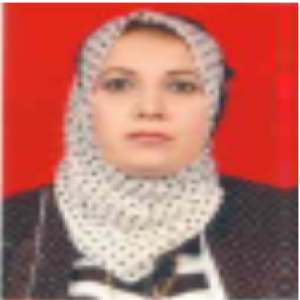Conference
2022
Survey on Lead (Pb) and Copper (Cu) Pollutions of Bottled Water Resources, Wells and Khabur River
2022-11
5th International Conference for agricultural and Environmental Sciences
. 15 water resources in Zakho city, including drinking bottled water, well and varying
profile at Khabur river, at wastewater discharge and before, at water purification station, and in
between to study their Pb and Cu content to compare them with the world recommended rate.
The results revealed that the highest Pb rates were detected in well water (29.767 mg. l-1
), Zereen
bottled drinking water (26.045 mg. l-1
), Tian bottled drinking water (26.48 mg. l-1
), and life
bottled drinking water (26.2 mg. l-1
). The above-mentioned treatments substantially exceeded
Khabur water near water purification station (20.264 mg. l-1
), Jimkerik location (19.844 mg. l-1
)
and at Beedar bridge (18.188 mg. l-1
). However, in significant differences were detected among
the highest pb rate treatments and Hayat bottled drinking water (25.395 mg. l-1
), Shakespeare
bottled drinking water (24.34 mg. l-1
), Mazy bottled drinking water (25.315 mg. l-1
), Lava bottled
drinking water (24.65 mg.l-1
), Kavi bottled drinking water (25.105 mg. l-1
), Waha bottled
drinking water (24.625 mg. l-1
), Shereen bottled drinking water (24.77 mg. l-1
), and water at
purification station (22.992 mg. l-1
). Well showed the highest Cu polluted water (12.21 mg. l-1
),
it profoundly bypassed Shereen bottled water (8.11 mg. l-1
), which revealed the lowest Cu
pollution value, Hayat bottled water (9.36 mg. l-1
), Shakespeare (9.4 mg. l-1
), Mazy bottled water
(9.63 mg. l-1
), Tian bottled water (10.09 mg. l-1
), life bottled water ((9.82 mg. l-1
), Lava bottled
water (9.79 mg. l-1
), and Waha bottled water (10.08 mg. l-1
). Insignificant differences were
observed among well water and Kavi bottled water (10.64 mg. l-1
), Zereen bottled water (10.31
mg. l-1
), water at purification station (10.51 mg. l-1
), water at wastewater discharge (10.88 mg. l1
), water at Beedar bridge (11.2 mg. l-1
) and water at Jimkerik (11.06 mg. l-1
).
2018
Risk evaluation of accumulated heavy metals for Radish (Raphanus sativus L. var. sativus) cultivars irrigated by varying water resources
2018-03
3rd Agricultural Scientific Conference 5-6 March 2018/ College of Agriculture
Three radish cultivars namely Ufasic, Gigante, and Saxa2 grown under plastic
house, irrigated by familiar Life drinking water, well and Dohuk river wastewater
to evaluate the risk of accumulated heavy metals in leaves and root of three radish
cultivars. The obtained results manifested that a very high amount of Pb accumulate
as compared to the international recommended standard. Maximum Pb limit for human
health has been established for edible parts of crops (0.2 mg.kg-1). Particularly,
in edible leaves of radish irrigated with bottled water “life” and waste water
(19.8641 and 15.6603μg.g
-1
,respectively).Similar trends obsered in accumulated Pb
in edible roots of life water (19.69μg.g
-1
) and waster water (25.74μg.g
-1
).Waste
water significantly increased the accumulated Zn (9.732μg.g
-1
), in edibile leaves
of radish. Radish roots were not capable to sequestered Zn in their roots, and therefore,
most absorbed Zn translocated to leaves. The lowst accumulated Cd in edible
radish root (0.986μg.g
-1
) observed in radish irrigated with well water. Saxa2 can be
recommended for Pb bio remedy for extracting Pb from growing media. Ufasic and
Saxa2 can be recommended for Zn extraction from growing media. Gigante engages
the gap between them. Interaction results mentioned in results and discussion.
Key word: Pb, Cu, Zn, Cd, Heavy metal pollution, Health risk, wastewater, water resources, Radish
Back
